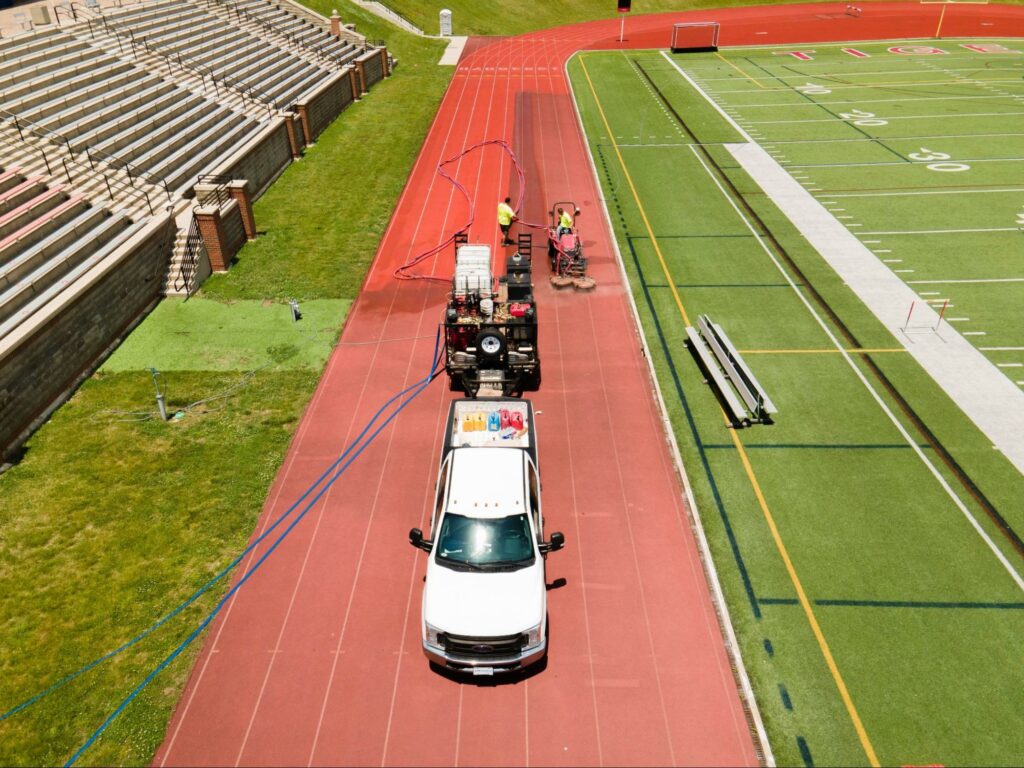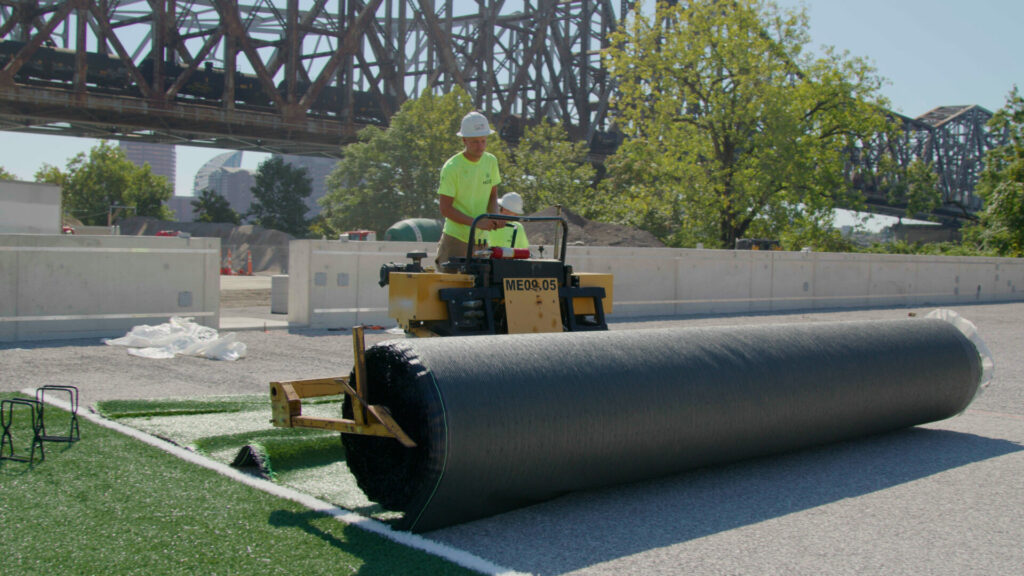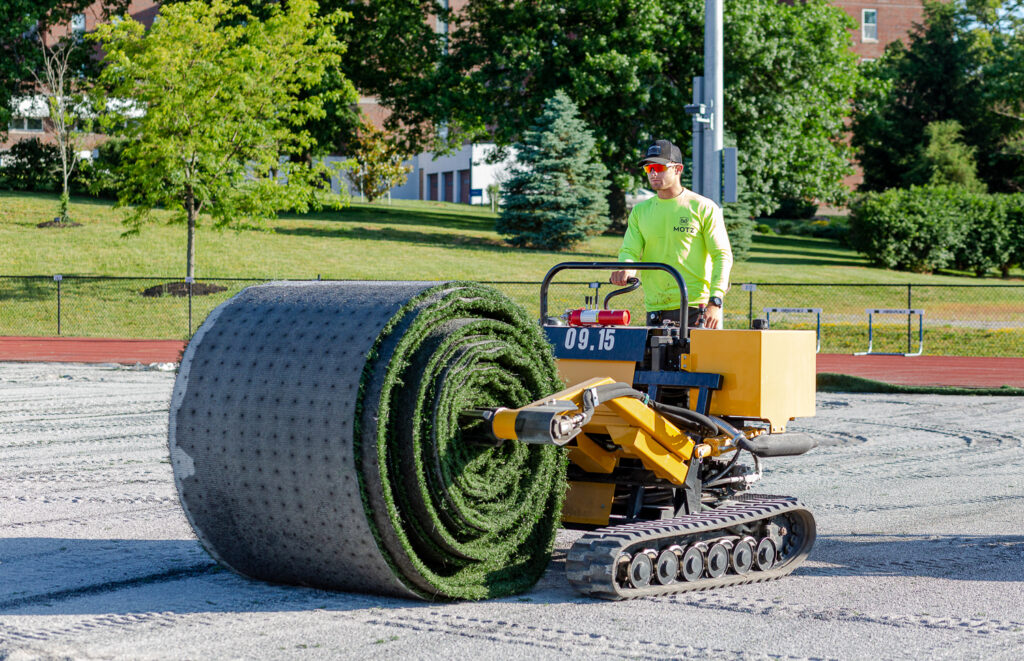
Sports Field Blog
Subscribe To Email Updates
Subscribe to our weekly newsletter and we’ll send updates straight to your inbox
The 6 Steps to Replacing Your Synthetic Turf Field (the Smart Way)
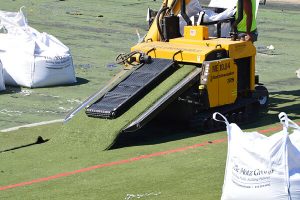
It’s been gradual, but after years of daily practices and games, your durable artificial turf system is finally starting to show some signs of wear and tear. You suspect that a field replacement may be in order, but you aren’t totally sure where to start. Replacing an entire synthetic turf sports field is, after all, a sizable project. How can you be positive that turf replacement is really what’s needed, and where do you go from there?
Below, we’ll walk you through everything you need to know and plan for in six steps when replacing a turf field, so that you can tackle this project with confidence.
1) Map out your timeline.
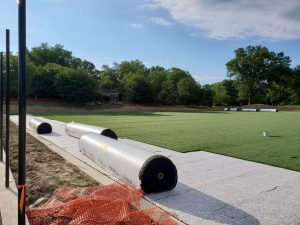
Synthetic turf field replacements don’t happen overnight, and you’ll want to make sure you have plenty of time to execute your project. After first consulting with experts (like the Motz365 team!) to see if your field’s lifespan can be extended before it’s replaced, create a framework for everything that needs to get done, and begin to assemble a timeline for it.
Generally speaking, turf field replacements take about four to six weeks to complete, though that can vary some between contractors. However, the planning process should be kicked off long before that — ideally 12 months ahead of when you expect the field replacement project to actually start. You’ll need enough buffer time to ensure that internal stakeholders are aligned.
Potentially complicating your timeline, too, is the practice of bundling field replacement with other infrastructure upgrades needed at your facility. Have plans to eventually upgrade your athletic facility’s lighting, invest in better bleachers, renovate your track, or add protective lacrosse netting? To limit the time your field is out of commission, it can make sense to knock these projects out in one fell swoop. That said, bundling improvements can extend how long it takes to replace your turf, so it’s best to get as detailed a view of your overall timeline as possible.
2) Understand your synthetic turf costs, and pinpoint a replacement budget.
First, make sure that you aren’t within your turf field’s warranty period. Most synthetic turf manufacturers offer a warranty of eight years; once you’ve confirmed that your warranty period has passed, or that your warranty doesn’t apply, it’s time to start assembling a budget for field replacement. While the base and drainage systems can be reused, field replacement still doesn’t come cheap. You’ll need to line up your budget before starting any work.
3) Finetune your fundraising plan.
For a project of this size and expense, it can be helpful to establish a fundraising team who can help you generate the needed funds. If you’re the manager of a school-affiliated turf field, something your team can help oversee is reaching out to alumni and parents for donations, and a fundraising team can also spearhead grant applications. Additionally, you may want to consider crowdfunding or looking into a cooperative purchasing program — Motz is an awarded vendor to several — to help you save time and money with your turf replacement project. Another tactic? Selling corporate sponsorships and on-field advertising placements, as a new and improved sports field is something any number of local businesses will want to link their name to.
4) Consider your new field’s design.
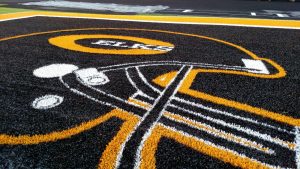
Perhaps you, in a bid not to reinvent the wheel, intend simply to replicate your existing field. That’s a perfectly fine option! If the idea of trying out new turf field designs holds any appeal, though, now’s the time to do it. You could customize your field’s design with your school’s logo or mascot, install alternated color panels, or opt for a logo accent in the form of “ghosted letters.” Click here to learn more about options for customizing your field’s design, elevating fan pride and your school’s brand in the process.
5) Determine what you’ll do with your old turf.
In general, this comes down to two options: letting your turf installation company recycle your old turf or sending it to a landfill.
Some folks try hanging onto their old turf, but frankly, that isn’t recommended. Old, rolled-up turf takes up a lot of space, is unwieldy to move, inconvenient to store, and doesn’t look or perform well. And if you decide it isn’t worth the headache down the road, the amount you’ll be charged to send your old turf to a landfill can feel like a small fortune.
Interested in other turf recycling options that will help lower your field’s environmental footprint? Check out this “Zero Waste Initiative Project,” done in partnership with the athletics department of Mariemont High School! For a relatively small charge, your old field can be responsibly diverted from the landfill and recycled into new products such as plastic lumber or synthetic turf shock pads.
6) Get help from experts.
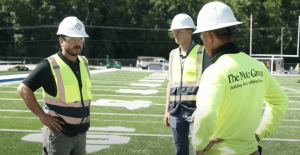
When contemplating a major project like synthetic turf field replacement, it’s best not to go it alone. As the providers of complete lifecycle management for turf fields, Motz’s team of Field Consultants are turf care experts who’ve serviced hundreds of aging fields, including those originally installed by other contractors. We can help you come up with a plan for field replacement that fits your needs, timeline and budget, leaving you with a new and improved turf field designed to optimally support athletes for years to come.
Contact The Motz Group about synthetic turf field replacement today!
Similar Blogs
